With origins dating back to the 18th century, these little bites of heaven have captured my heart. Not to be confused with the "macaroon," which are the toasted coconut confections of North American popularity, the macaron is perfectly and unsurprisingly, French. I had my first encounter with the macaron during the summer of 2007. It was a clear day in Paris. Walking past an adorable pâtisserie on the corner of a street in Montmartre (which is no longer there, sadly.), my friend Megan and I decided to dangerously venture in, intrigued by the bustling line that had formed around the counter and lulled by the wafting scents only a bakery can produce. Suddenly, there they were, behind that pristine domed class counter. Stacked on top of one another in a variety of colors, beckoning my taste buds to submission. I had to have one. But what the heck were they? I had no idea. Megan purchased a pistachio, while I had the black currant. Hold on while I recall our reactions. Oh yes.
MY.
SWEET.
GOD."
Of course this tale does come with a point. Since Paris, I have attempted to make some of my own, but the process is so meticulously arduous that I seldom do work up the courage to set aside the afternoon---or maybe more like a day--to create them. A couple of years ago I tried a plain almond and nutella macaron which was, I'm proud to say, very successful. However I've lost that original recipe and this time around, I decided to be a bit more experimental which cost me dearly in hindsight. These delicate meringue cookies are so fragile and temperamental it makes me want to cry in surrender, but if you are lucky enough to get them perfect, it's well worth it. I don't think one understands the average price of a macaron until they attempt to make one.

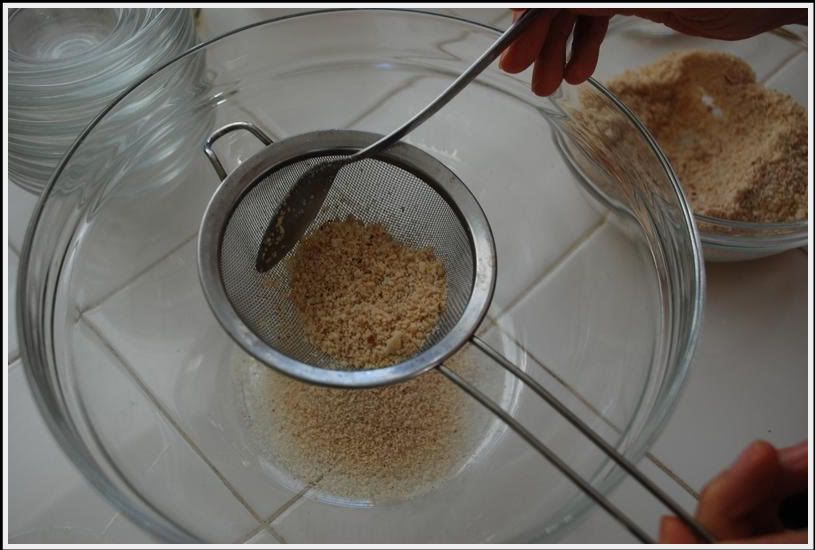
The recipe I used was from La Cuisine de Mercotte here, and hopefully next time I will set aside my nervousness to pay closer attention to the measurement conversions so that perhaps you can try a hand at it too!
Ingredients
- 90g egg whites that have been aged and brought up to room temperature
- 220 g confectioner’s sugar
- 120 g almond meal roasted in a 300 degree oven for 10 minutes and allowed to cool
- 25 g granulated sugar
- 1/4-1/2 Tsp of powdered food coloring of your choice
Directions
1. Place a baking sheet in the oven and preheat at 300 degrees for small macarons or 320 degrees for large ones.
2. Use the pulse mechanism on your food processor to blend together the confectioner’s sugar and the almond meal, making sure that they don’t overheat. Sift this mixture.
3. Beat the egg whites until firm with 2 drops of lemon juice and a pinch of salt, allow them to foam and add the granulated sugar bit by bit. Before you finish beating the meringue, add the coloring.
4. Pour half of the almond mixture onto the meringue, and incorporate it with a spatula by starting from the middle of the bowl and moving upwards and out. When the mixture becomes homogeneous, add the rest of the almond meal and sugar and repeat the same process.
5. The batter should be a shiny, smooth, pliable, quasi-liquid mixture that resembles magma. Pipe out your shells in staggered rows on perforated baking sheets, covered with a silicone mat or parchment paper. You should use a pastry bag with a 10 mm tip for this.
6. Place the shells into the oven on the heated baking sheet. Cooking time is about 13 minutes for small shells, but if you are making large macarons they will need a few extra minutes. Let them cool slightly before removing them from the baking sheet. If you use a silicone mat, the shells should pop right off, no need to entice them by slipping moisture underneath!
I suggest at this point that you make a small indentation on the underside of each shell. This makes it much easier to fill them later on.
Cooking times will obviously vary according to the oven.
Due to certain atmospheric conditions or supernatural causes, perhaps you find it necessary to leave the piped shells out for an hour before baking to help the outer crust develop. I, on the other hand, don’t; but maybe you should give this method some thought if you consistently end up with macarons that are cracked or have no collar.
The quantities in this recipe will yield about 120 shells or 60 macarons.

Bon appétit.
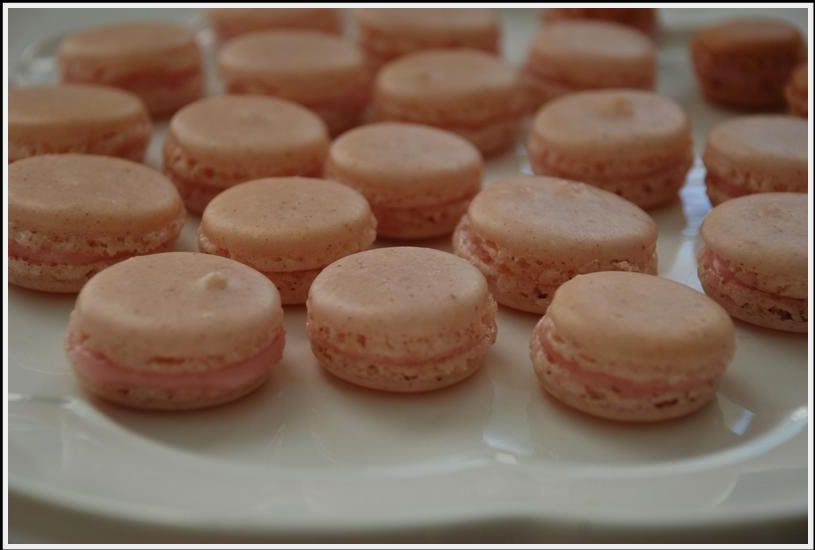
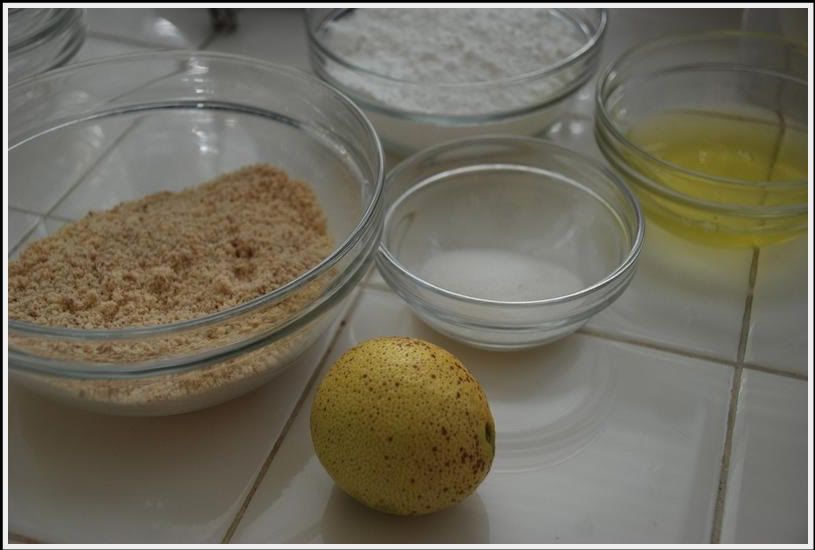
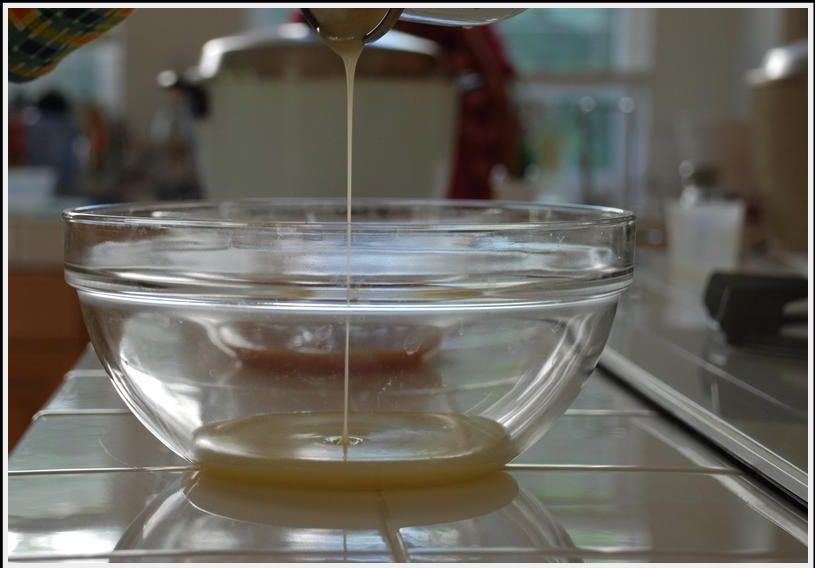

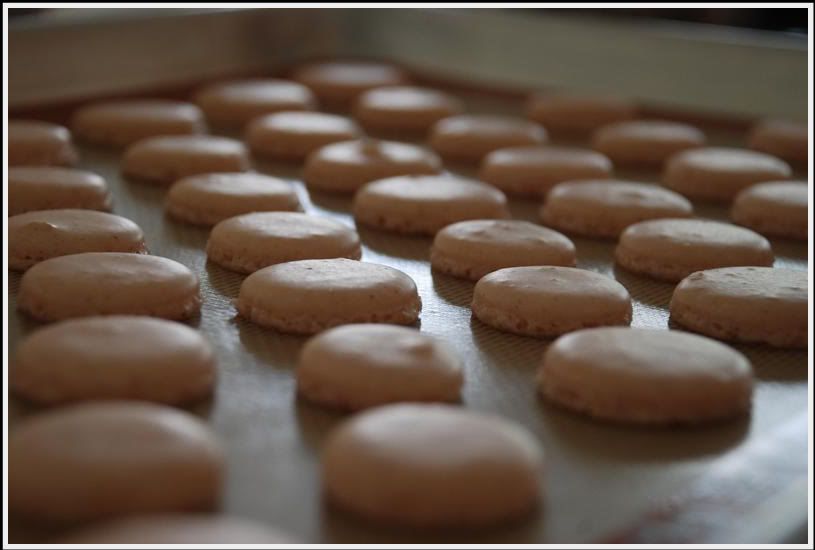
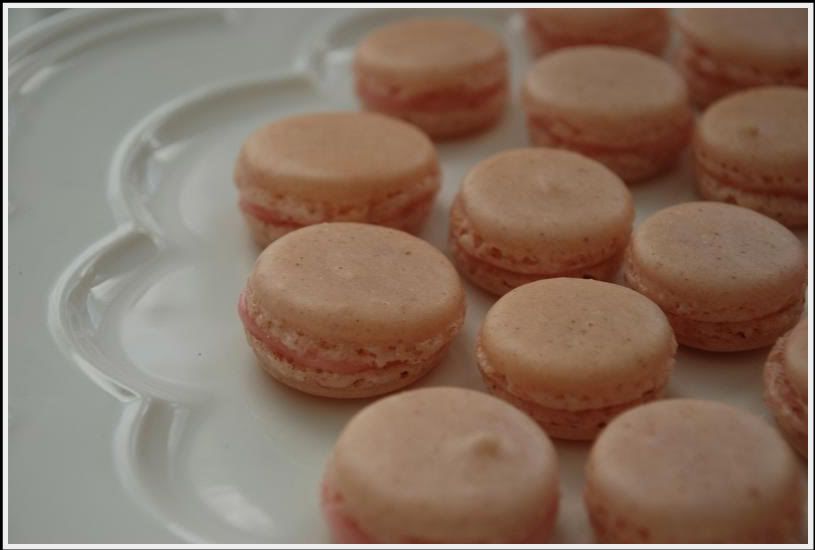

I didn't know that there was a difference between "macaron" and "macaroon". Oh silly me.
ReplyDeleteAnyways, I've always wanted to try these tasteful pastries, and to my delight I actually found some in a pastry shop in Korea. I'm sure that the ones in Paris are absolutely incomparable to those in Korea, but they were surely little "bites of heaven". EEEEEK. I tried Pistachio, Strawberry, and Coffee, and Vanilla. But I think they're a bit too sweet for me. But perfect with a cup of tea.
Anyways, you are so talented in the kitchen.
<3
btw, this is Ashley :)
wow! =) this is becca. these are beautiful.
ReplyDeleteOh, I'm so glad you've tried them!
ReplyDeleteI've never tasted Korean versions, that's fantastic.
Thanks Becca! :)
ReplyDeletehehe.